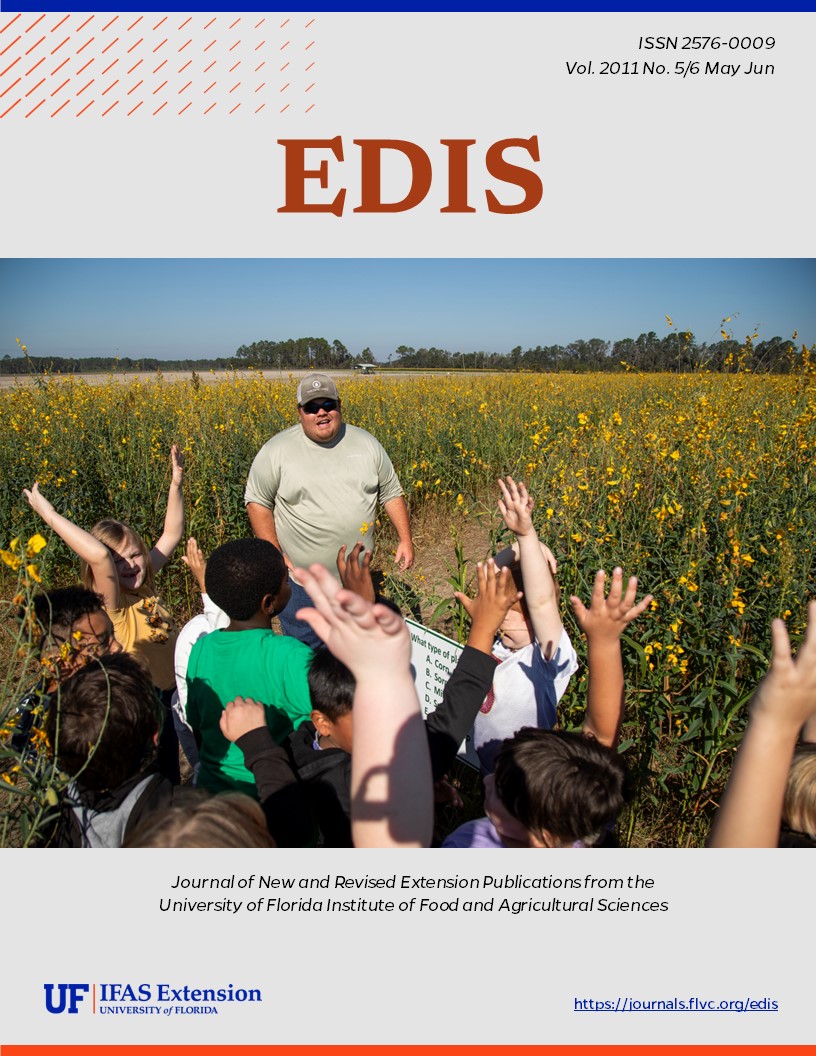Abstract
The granulate ambrosia beetle is a minute ambrosia beetle of Asian origin that was first detected near Charleston, South Carolina. It can become abundant in urban, agricultural, and forested areas and has been reported as a pest of nursery stock and young trees in the Old World tropics and of peach trees in South Carolina. It is a potentially serious pest of ornamentals and fruit trees and is reported to be able to infest most trees and some shrubs (azalea), except for conifers. Learn more in this revised 4-page fact sheet was written by Thomas. H. Atkinson, John L. Foltz, Robert C. Wilkinson, and Russell F. Mizell and published by the UF Department of Entomology and Nematology, March 2011.
References
Anderson DM. 1974. First record of Xyleborus semiopacus in the continental United States (Coleoptera: Scolytidae). U.S. Department of Agriculture Cooperative Economic Insect Report 24: 863-864.
Bambara S, Sorensen K, Baker JR, Casey C. (March 2003). The Asian ambrosia beetle. Ornamentals and Turf Insect Notes. http://www.ces.ncsu.edu/depts/ent/notes/Ornamentals_and_Turf/trees/note111/note111.html (14 April 2004).
Browne FG. 1961. The biology of Malayan Scolytidae and Platypodidae. Malayan Forest Records 22: 1-255.
Chapin JB, Oliver AD. 1986 New records for Xylosandrusand Xyleborus species (Coleoptera: Scolytidae). Proceedings of the Entomological Society of Washington 88: 680-683.
Cole, KW. (January 2008). Granulate Ambrosia Beetle. Indiana Department of Natural Resources. http://www.in.gov/dnr/entomolo/fi les/ep-GranulateAmbrosiaBeetle-Factsheet.pdf (14 March 2011).
Deyrup MA, Atkinson TH. 1987. New distribution records of Scolytidae from Indiana and Florida. Great Lakes Entomologist 20: 67-68.
Hudson W, Mizell RF. 1999. Management of Asian ambrosia beetle, Xylosandrus crassiusculus, in nurseries. Proceedings of the Southern Nursery Growers Association 44:198-201.
Kovach J, Gorsuch CS. 1985. Survey of ambrosia beetle species infesting South Carolina peach orchards and a taxonomic key for the most common species. Journal of Agricultural Entomology 2: 238-247.
Mangold JR, Wilkinson RC, Short DE. 1977. Chlorpyrifos sprays for control of Xylosandrus compactus in flowering dogwood. Journal of Economic Entomology 70: 789-790. https://doi.org/10.1093/jee/70.6.789
Mizell RF, Bolques A, Crampton P. 1998. Evaluation of insecticides to control the Asian ambrosia beetle, Xylosandrus crassiusculus. Proceedings of the Southern Nursery Growers Association 43: 162-165
Mizell RF, Fasulo TR, Short DE. (2002). WoodyBug: pest and beneficial arthropods of southeastern U.S. woody ornamentals. University of Florida/IFAS. CD-ROM. SW 119.
Schedl KE. 1962. Scolytidae und Platypodidae Afrikas. II. Rev. Ent. Mozambique 5: 1-594.
Solomon JD. 1995. Guide to Insect Borers of North American Broadleaf Trees and Shrubs. Agricultural Handbook 706. Washington, DC: U.S. Department of Agriculture Forest Service 735 pp.
Wood SL. 1982. The bark and ambrosia beetles of North and Central America (Coleoptera: Scolytidae), a taxonomic monograph. Great Basin Naturalist Memorandum 6: 1-1359.

